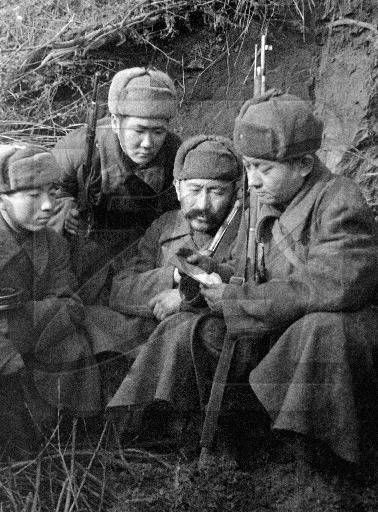Soldier life in the early years of World War II
 Тематика stories The Second World War is many-sided, many books, articles, memoirs and memoirs have been written on this topic. But for a long time, under the influence of ideology, these topics were covered mainly from a political, patriotic or general military point of view, very little attention was paid to the role of each individual soldier. And only in the times of Khrushchev's “thaw”, the first publications began to appear based on front letters, diaries and unpublished sources, highlighting the problems of front-line life, the period of the Patriotic War 1941 - 1945. in what were dressed, all these questions are important in the overall contribution to the great victory.
Тематика stories The Second World War is many-sided, many books, articles, memoirs and memoirs have been written on this topic. But for a long time, under the influence of ideology, these topics were covered mainly from a political, patriotic or general military point of view, very little attention was paid to the role of each individual soldier. And only in the times of Khrushchev's “thaw”, the first publications began to appear based on front letters, diaries and unpublished sources, highlighting the problems of front-line life, the period of the Patriotic War 1941 - 1945. in what were dressed, all these questions are important in the overall contribution to the great victory.
In the initial war, soldiers wore a tunic and pants with overlays of tarpaulin in the areas of elbows and knees, these linings prolonged the service life of the uniforms. They wore boots and windings on their feet, which were the main grief of the entire service brethren, especially the infantry, as they were uncomfortable, fragile and heavy.
Up until 1943, an indispensable attribute was the so-called "roll", rolled up overcoat and put on over the left shoulder, causing a lot of trouble and inconvenience from which soldiers would get rid of at any opportunity.
From small weapons In the early years of the war, soldiers used the legendary “three-lane” warrior and love. The three-line Mosin 1891 rifle, many soldiers gave them names and considered the rifle to be a real comrade or never under difficult conditions of battle. But for example, the SVT-40 rifle was not loved because of its capriciousness and strong recoil.
Interesting information about the life and life of soldiers contains such sources of information as memories, front-line diaries and letters, the least subject to ideological influence. For example, traditionally it was believed that the soldiers lived in dugouts and pillboxes. This is not quite true, most of the soldiers were located in trenches, trenches or simply in the nearby forest, without any regret. In the dotah it was always very cold at the time there were no systems autonomous heating и autonomous gas supplywhich we are currently using for example for heating cottages and therefore the soldiers preferred to spend the night in the trenches, throwing branches on the bottom and stretching their cloak-tent on top.
The food of the soldiers was uncomplicated, “Shchi and porridge-food is ours,” this proverb accurately describes the ration of soldiers' bowlers of the first months of the war and of course, the bishop’s best friend, a favorite delicacy, especially in field conditions, for example, on a combat march.
Also, the soldiers' life in meek rest periods cannot be imagined without the music of songs and books, which gave birth to a good mood and raised courage.
Still, the psychology of the Russian soldier, who is able to cope with any domestic difficulties, overcome fear, hold out and win, played the most important role in the victory over fascism.
Information